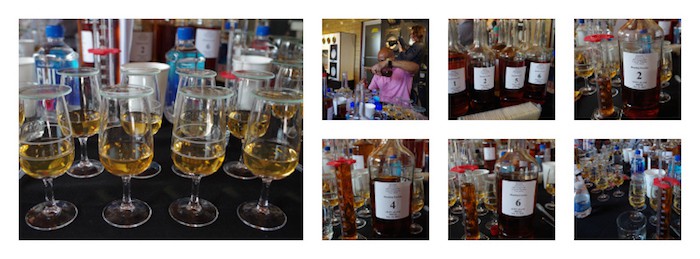American blended whiskey is just awful. According to the TTB Standards of Identity, there are multiple categories of blended whiskey, most of which can be as little as 20% actual whiskey. The rest can be grain neutral spirits, flavorings, colorings, and other “harmless blending materials.” This is the type of stuff that gave Four Roses a bad name during the decades its bourbon was export-only. People who haven’t tried Four Roses in 25 years or more would likely turn their noses up at the suggestion they try some, it was just that bad.
Batching, or mingling, bourbon is quite different. It would be easy to say that blended whiskey is bad so mixing whiskeys at all must be bad, but batching or mingling whiskeys is exactly how brands keep their flavor profile standard. No two barrels of bourbon, even made at the same distillery from the same mash bill, are exactly alike. Getting your Woodford Reserve or your Jim Beam to taste the same every bottle you buy requires batching or mingling for consistency.

According to the TTB, bourbon is “whisky produced in the U.S. at not exceeding 80% alcohol by volume (160 proof) from a fermented mash of not less than 51 percent corn and stored at not more than 62.5% alcohol by volume (125 proof) in charred new oak containers.” Contrary to popular belief, there’s no minimum age requirement in order to be called bourbon, though to be called “Straight Bourbon Whiskey,” it must be stored in new charred oak containers for a minimum of two years.
The standard continues, ““Straight Bourbon Whisky” may include mixtures of two or more straight bourbon whiskies provided all of the whiskies are produced in the same state.” So, even though barrels from different distilleries that may have been distilled at different times are batched or mingled together, it’s still “Straight Bourbon Whiskey.”
Chances are, because of the strict standards of identity, it’s going to be good whiskey. It doesn’t matter whether it was batched or mingled by a distillery or by a non-distilling producer; it all has to adhere to the rules. If it says bourbon or straight bourbon on the label, no flavors or colors can be added. That said, most distilleries in Kentucky don’t have any excess bourbon to sell to non-distilling producers these days, so if you see a new bourbon brand labeled “Kentucky Straight Bourbon Whiskey,” it might be worth some investigation on the TTB website. There you’ll be able to view the label application and applicant data to figure out where the whiskey is actually being made.



